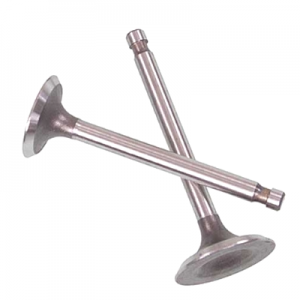What’s a Valve Grind All About?

Alright, so if you’re cruising down Ulster Street on a soggy Monday morning, or bouncing over those surprise potholes in Nawton, your engine’s got a lot going on under the bonnet. One thing people don’t usually think about are the engine valves. These little fellas let air and fuel in, then seal up tight for combustion, then let the exhaust out. Pretty important to keeping your Nissan Tiida or that trusty VW Golf humming along, no matter if you’re nipping over to Morrinsville or dodging speed bumps on River Road.
A valve grind (you might’ve heard it called a valve job or lapping) means smoothing out those valve surfaces so they seal up tight in the cylinder head. If you get a good seal, your engine’s happy—if not, you can end up with all sorts of power loss and strange noises.
When Do You Need a Valve Grind?
Beating around busy Hamilton traffic, especially with all those stop-start mornings from Rototuna to Frankton, your valves are constantly moving and copping a hiding from heat. Old bangers from before the ‘70s (think classic Corollas and Datsuns) used to burn valves all the time—nowadays, with better metals in your Hyundai i30 or Mazda Axela, you might never need a grind. But, sometimes things go wrong—a worn seat, a dodgy tappet, or maybe the valve just cops some damage, and that’s when you need it looked at.
Sometimes it’s not just the valves we find when we take the cylinder head off; we’ve spotted oil leaks, cracks in heads, and even coolant sneaking out where it shouldn’t. Gives us a chance to sort the real problem and keep you cruising between Cambridge and Te Awamutu without a hiccup.
Bit suspicious your valves might be crook? Keep an eye out (or an ear!) for stuff like:
- Chuffing or weird noises from the exhaust—sometimes sounds a bit like an old tractor
- Engine running rough, struggling at the lights on Grey Street
- Missing power—feels flat up those Dinsdale hills
- White smoke out the pipe
- More fuel stops than usual, even though you’re just doing the usual school run in Glenview
Want more info on what happens when valves fail? Flick an eye over this quick guide on engine valve failure.
What Happens in the Workshop?
If we reckon you need a valve grind, here’s roughly what one of our techs will get up to:
- Take the head off—yep, out comes the cylinder head so we can actually see what’s what.
- Check over the valves—hunting for wear, burning, pitting, or bits that look past their best.
- Lapping/Grinding—using a special abrasive paste, we smooth the valve faces and the seat for a mint seal. Sometimes it’s like giving an old Honda Accord a fresh set of gnashers.
- Valve clearance—we’ll check the gap (lash) so the timing stays on point, stops anything crashing into pistons.
- Replace seals if needed—stops oil slipping past and ending up in the wrong spot.
- Put it all back together, test—make sure that fix has you right for the open road again.
A valve grind means your car will have better compression, use less fuel, idle nicer, and hang in for years more through foggy winter mornings and the blazing Hillcrest summer. All those small Euro runabouts, big Toyota Hiaces, even the odd Great Wall or SsangYong—job’s the same. Doesn’t matter if you’re bringing in a family van or your hybrid, or whether it’s Mrs Smith’s daily or your work wagon.
Local Valve Repairs & Car Servicing in Hamilton
Look, if you want your car ticking along nice, regular service is a must—especially with all the up and down weather, and how tough Hamilton and Waikato roads can be on engines. Here at Grimmer Motors, we can sort your valve grinding, do repairs, or even help with bigger jobs if needed. That way you’re not worrying about being left stranded halfway to Ngaruawahia or getting stuck in Chartwell rush hour.
If you’re in need of a good car service in Hamilton and reckon your valves might need a bit of love, just give us a shout. Bring your car in, we’ll diagnose the real problem, we’ll sort quality parts and service—none of this supply-your-own-parts stuff, we like to do the job right and guarantee it.

